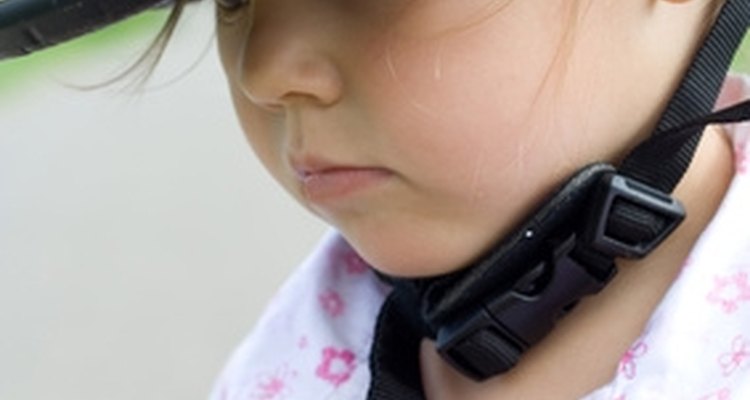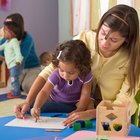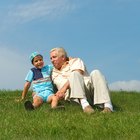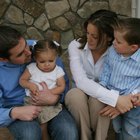
The purpose of a health and safety policy in a child care setting is to provide parents with a written statement of the procedures in place to protect their children. The policy protects child care providers, as well, by detailing the training and procedure standards that need to be followed on a daily basis. To ensure that parents and staff read and understand the policy, provide two copies and request that a signed copy be returned prior to attendance or employment.
Prevention
According to the California Child Care Health Program, the policy should call for hand-washing by staff and children at arrival, when moving from one child care group to another, after handling pets or bodily fluid and before and after eating or handling food. Children and staff also need to wash hands after toileting and diapering, administering medication, sand or water play, or handling garbage or uncooked food. The policy should include provisions for sanitizing counters and table surfaces, toys, bathrooms and diaper changing areas, as well as for weekly cleaning of all bed linens used by the children.
Illness
The policy should identify criteria for the exclusion of ill children from the program. Symptoms requiring exclusion include fever, vomiting, diarrhea, discharge from the eye or others resulting from a known contagious illness. If any of these symptoms are the result of a non-contagious issue, documentation from the child's physician should be required. The policy also needs to provide for the exclusion of a child whose illness prevents him or her from participating in activities or prevents the caregiver from providing quality care to other children.
Provision for Emergency
The health and safety policy should include plans for emergencies. Detail the policy for transporting a child to a health care facility, including a statement that the parent will be notified as soon as it is practical. Include provisions for staff training in first aid and cardiopulmonary resuscitation (CPR), and for locating and using fire extinguishers. Detail procedures in the event of a fire or weather emergency, and call for a current listing of emergency numbers, including contact numbers for parents.
Transportation
A child care health and safety policy details provisions for the transporting of children, including the requirement that a signed permission form be on file for each child. The policy needs to address the mode of transportation, the credentials of the drivers, the car seat policy and the routine maintenance of the vehicle.
Background and Medical Clearance
To meet licensing and registration standards, each adult who comes into contact with children in any capacity in a child care facility must receive background and medical clearance, and adherence to this regulation should be addressed in the health and safety policy. The policy should clearly state the background and medical check process, indicating the type of records or history that would disqualify an adult from working or volunteering at the facility.
Related Articles

Rules for Employees That Work at a ...

Day Care Safety & Hazard Checklist

Indiana Child Daycare Laws

How to Obtain a Child Care License in ...

How to Start an After School Program in ...

How to Become a Foster Parent in ...

Preschool Teacher Requirements in ...

What Is a Caregiver's Authorization ...

How to Open a Daycare Center in ...

How to Report Daycare Centers

How to Get Your Kids Back From CPS

How to Organize a Church Nursery

How to Make a Complaint to Mississippi ...

Health Risks of Marble Dust

Three Warning Signs of Neglect

How to Apply for Welfare Benefits in ...

How to Get Rental Assistance for Seniors

How to Sign Up for CCMS in Texas

How to Become an Emancipated Minor

California CPS Laws
References
Writer Bio
Pam Murphy is a writer specializing in fitness, childcare and business-related topics. She is a member of the National Association for Family Child Care and contributes to various websites. Murphy is a licensed childcare professional and holds a Bachelor of Arts in English from the University of West Georgia.
Photo Credits
safety image by anna karwowska from Fotolia.com